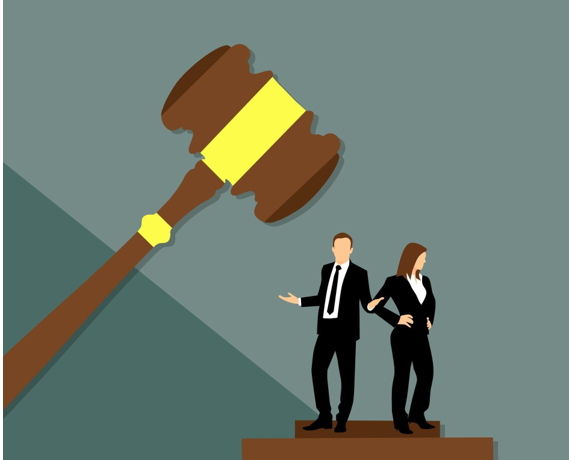LAW
Isotonix Lawsuit: What You Need to Know about this controversy

The world of health supplements is vast and varied. It’s a marketplace where consumers often find themselves navigating through a sea of promises and claims. Among these many products, Isotonix has stood out. But recently, Isotonix has found itself embroiled in a legal controversy. If you’re a consumer, a stakeholder, or simply someone intrigued by the world of nutritional supplements, this blog will guide you through the ongoing Isotonix lawsuit, shedding light on all you need to know.
Why Isotonix Matters in the Supplement World
Isotonix is renowned for its unique delivery system. Unlike traditional pills, Isotonix products come in powder form, which users mix with water before consumption. This method is said to allow for faster absorption of nutrients. For many health enthusiasts, this innovative approach has been a game-changer, offering an alternative that promises enhanced efficacy.
Consumers have applauded Isotonix not just for its delivery system but also for its broad range of products. From multivitamins to targeted formulas addressing specific health needs, Isotonix offers something for everyone. This extensive range has made it a popular choice for those looking to optimize their health and wellness routines.
However, with popularity comes scrutiny. The increasing number of users has inevitably drawn attention from various regulatory bodies and competitors. While such attention can bolster a brand’s credibility, it can also lead to challenges, especially if claims don’t match up to reality.
The Origins of the Isotonix Lawsuit
The Isotonix lawsuit did not emerge overnight. It is the culmination of years of consumer feedback, reviews, and investigations. To understand the lawsuit’s roots, we need to look back at the growing concerns surrounding health supplements and their claims.
For several years, consumers have raised questions about the efficacy of various health supplements. Claims of miraculous benefits, often unsupported by scientific evidence, have led many to question the integrity of these products. Isotonix, with its bold marketing claims, naturally fell under this skeptical gaze.
While Isotonix boasts of its superior absorption rates, many began to wonder about the scientific backing behind these assertions. This skepticism, combined with anecdotal reports of negligible results, paved the way for further scrutiny and eventual legal action.
Key Allegations in the Isotonix Lawsuit
The lawsuit against Isotonix isn’t a simple matter of disgruntled customers. It involves several serious allegations that have caught the attention of both media and regulatory bodies. Understanding these allegations can provide insight into the potential outcomes of this legal battle.
One of the primary allegations revolves around misleading marketing. It’s claimed that Isotonix exaggerated the benefits of its products without sufficient scientific evidence to back these claims. For consumers, this raises concerns about the authenticity and transparency of the brand’s communications.
Another significant allegation is related to product safety. Some consumers have reported adverse reactions after using certain Isotonix products. While such reactions are not uncommon in the supplement industry, the frequency and nature of these reports have added fuel to the lawsuit.
Lastly, there’s the issue of undisclosed ingredients. In the health and wellness industry, transparency is paramount. Allegations suggest that some Isotonix products may contain ingredients not listed on their labels, leading to potential health risks for users.
The Role of Consumer Feedback in the Lawsuit
Consumer feedback has been instrumental in shaping the trajectory of the Isotonix lawsuit. Online reviews, testimonials, and direct complaints have provided a wealth of information that has driven legal inquiries and investigations.
Many consumers have expressed dissatisfaction with the results of Isotonix products. For a company that promises superior absorption and efficacy, such feedback can be damaging. When these testimonials are consistent across various platforms, they become hard to ignore.
Furthermore, social media has amplified these voices, allowing consumers to share their experiences with a wider audience. This increased visibility has put pressure on Isotonix to address these concerns, whether through improved transparency, reformulation, or legal defense.
It’s essential to note that while negative feedback has played a significant role, there are also many loyal customers who swear by the benefits of Isotonix products. Balancing these diverse consumer experiences will be crucial for Isotonix as it navigates this lawsuit.
The Impact of the Lawsuit on Isotonix’s Reputation
Reputation is everything in the health and wellness industry. For Isotonix, the lawsuit presents both challenges and opportunities in terms of public perception and brand trust.
For existing customers, the lawsuit might raise doubts about the efficacy and safety of Isotonix products. These concerns could lead to reduced sales, as consumers seek out alternative brands with cleaner records or more transparent practices.
On the other hand, how Isotonix handles the lawsuit could also enhance its reputation. If the company takes proactive steps to address the allegations, improve product formulations, and communicate transparently with consumers, it could strengthen its brand image in the long run.
It’s important for stakeholders to monitor how Isotonix responds to the legal challenges. Transparency, accountability, and commitment to quality will be key factors in determining the company’s future success.
Legal Proceedings and Their Current Status
Understanding the status of the legal proceedings can help consumers and stakeholders gauge the potential outcomes and implications of the Isotonix lawsuit.
Currently, the lawsuit is in its preliminary stages. This means that investigations are ongoing, and both parties are gathering evidence to support their claims. It’s common for such cases to take time, as the legal system meticulously examines all facets of the allegations.
During this period, Isotonix will likely be working closely with legal experts to strategize its defense. The company might also explore settlement options, depending on the strength of the evidence against it and the potential impact on its reputation.
For those following the case, it’s vital to stay informed through credible news sources and official statements from Isotonix. The outcome of the lawsuit will significantly influence the landscape of the health supplement industry.
The Broader Implications for the Health Supplement Industry
While the Isotonix lawsuit specifically targets one brand, its implications resonate throughout the entire health supplement industry. The case raises important questions about marketing practices, product transparency, and consumer safety.
Firstly, the lawsuit underscores the need for stricter regulations in the supplement sector. With more companies making bold claims about their products, regulatory bodies may introduce new guidelines to protect consumers and ensure factual marketing.
Secondly, it highlights the importance of consumer advocacy. In an age where information is readily available, consumers are empowered to question and hold brands accountable. This shift in power dynamics is likely to drive more ethical practices across the industry.
Lastly, the Isotonix lawsuit serves as a cautionary tale for other supplement brands. Companies will be more cautious about the claims they make, ensuring they are backed by solid scientific research and transparent labeling.
The Science Behind Isotonix Products
Despite the controversies, it’s essential to understand the science behind Isotonix products. This knowledge can help consumers make informed decisions and differentiate between marketing claims and scientific fact.
Isotonix products are based on the concept of isotonic solutions, which mimic the concentration of body fluids. This theoretically allows for faster absorption of nutrients compared to traditional pills and capsules.
While this concept holds promise, the efficacy of isotonic solutions can vary based on individual health conditions and dietary needs. It’s crucial for consumers to consult healthcare professionals before incorporating such supplements into their routines.
Furthermore, scientific research on isotonic solutions is still evolving. While initial studies may support certain benefits, comprehensive research is needed to validate the long-term effects and safety of Isotonix products.
Consumer Advice and Safety Tips
In light of the ongoing lawsuit, consumers must prioritize their health and safety when considering Isotonix products. Here are some practical tips to keep in mind:
Before purchasing any supplement, conduct thorough research. Look for credible sources that provide unbiased reviews and information about the product’s ingredients and efficacy.
Consult healthcare professionals before adding new supplements to your diet, especially if you have underlying health conditions or are taking medications. Medical experts can provide personalized guidance based on your needs.
Be cautious of bold marketing claims that seem too good to be true. Remember, supplements are meant to complement a healthy lifestyle, not replace medical treatments or balanced diets.
Isotonix’s Response to the Allegations
Isotonix has remained relatively quiet in the face of the lawsuit. However, the company is expected to release official statements addressing the allegations and outlining its stance.
For consumers and stakeholders, the tone and content of these statements will be crucial. Transparency and accountability will be essential in rebuilding trust and reassuring customers of Isotonix’s commitment to quality.
It’s important to approach these statements with a critical mindset, comparing them with independent reviews and feedback from other consumers. This holistic approach will provide a clearer picture of Isotonix’s actions and intentions.
What the Future Holds for Isotonix
The future of Isotonix depends on several factors, including the outcome of the lawsuit and the company’s response to the allegations. While legal battles can be challenging, they also present opportunities for growth and improvement.
If Isotonix successfully addresses the concerns raised in the lawsuit, it could emerge stronger and more resilient. By prioritizing transparency, quality, and consumer satisfaction, the company can set new standards in the supplement industry.
Ultimately, the Isotonix lawsuit serves as a reminder of the importance of integrity and accountability in business. For Isotonix and other supplement brands, the key to long-term success lies in consistently delivering on promises and prioritizing consumer well-being.
Final Thoughts and Next Steps
Navigating the complexities of the Isotonix lawsuit requires a careful balance of skepticism and open-mindedness. While the legal proceedings unfold, consumers must remain informed and vigilant, making decisions based on credible information and expert advice.
For those interested in exploring more about the lawsuit, consider consulting legal experts, health professionals, and consumer advocacy groups. These resources can provide additional insights and support as you evaluate the implications of the case.
In the world of health supplements, knowledge is power. By staying informed and proactive, you can make informed choices that prioritize your health and well-being.
LAW
How Auto Accident Legal Services Can Help You

If you’ve been in a car accident, getting legal help early can make the process smoother. Auto accident legal services guide you through the steps that follow.
They help you understand your rights, deal with insurance, and build a strong case. You don’t have to navigate this alone.
The right support can protect your time, money, and well-being. Here’s how auto accident legal services can help you.
Understand Your Legal Rights
After an accident, most people don’t know what they’re entitled to. Legal services explain your rights clearly. Whether it’s medical bills or lost wages, you should know what to expect.
A lawyer can tell you what compensation is possible. They also make sure insurance companies don’t take advantage of you. Having that knowledge helps you make smart choices.
Help with Insurance Claims
Filing a claim isn’t always simple. Insurance companies often try to minimize payouts. A legal team can step in and handle the paperwork and follow-ups.
They’ll know what documents to present and how to argue your case. This support reduces your stress and speeds up the process. You’re less likely to get pushed into a low offer.
Build a Strong Case
Auto accident legal services collect details that matter. They gather evidence like photos, witness statements, and reports. This makes your case more solid.
Lawyers know how to frame things so your side is clear. A strong case can help settle things faster or win at trial. In a place like San Francisco where roads are busy, this kind of support is valuable.
Negotiate a Fair Settlement
Many cases end in a settlement, not a courtroom. Legal professionals know what’s fair based on your injury and damages. They negotiate with the other party’s insurance or legal team.
This increases your chance of getting proper compensation. They won’t let you settle for less than what’s reasonable. You stay informed throughout the talks.
Provide Representation in Court
If a settlement doesn’t happen, your case may go to court. That’s where legal representation matters most. A lawyer knows how to present your story to a judge or jury.
They’ll prepare arguments, question witnesses, and stick to deadlines. This helps you stay focused on recovery. You won’t need to face the legal system alone.
Support with Long-Term Impact
Some injuries show up later or cause lasting issues. Legal services account for these long-term effects. They’ll include future medical care, therapy, or income loss in your claim.
You don’t want to overlook anything that could affect your life down the road. Their goal is to cover both current and future needs. This protects your financial well-being.
Explain Time Limits and Deadlines
Every state has its own rules about how long you have to file a claim. Legal services make sure you don’t miss any deadlines. Missing even one could cost you your right to compensation.
They track all dates and requirements for you. This keeps your case active and avoids unnecessary delays. You stay focused on healing while they handle the legal timeline.
Help You Understand Liability
Knowing who is at fault isn’t always clear. Auto accident legal services can investigate and break it down for you. They look at reports, witness statements, and local laws.
This helps show who should be held responsible. Clear liability is key to a strong case. It also affects how much you can recover.
Assess the Full Value of Your Claim
Many people only think of medical bills when they file a claim. Legal services look at everything, including lost wages, pain, and emotional distress. They add up short-term and long-term costs.
This gives you a full picture of what you deserve. Without this, you might settle for far less. A complete assessment leads to better results.
Protect You from Legal Tactics
The other party’s legal team might try to shift blame or offer a low deal. A lawyer can spot these tactics fast. They know how to respond and keep your case strong.
Auto accident legal services work to protect your rights at every step. You won’t be caught off guard or tricked into a bad agreement. That kind of defense can make all the difference.
Keep You Updated on Your Case
It’s frustrating when you’re left in the dark. Legal services keep you informed about your case status. They explain what’s happening and what to expect next.
You won’t have to chase answers or feel confused. Regular updates help you stay in control. Communication is part of the support they provide.
Offer Emotional Relief During a Stressful Time
Dealing with the aftermath of an accident is overwhelming. Legal services step in so you’re not handling everything alone. They manage the legal side while you focus on recovery.
Having someone in your corner brings peace of mind. You won’t need to second-guess every decision. That kind of support helps reduce stress and builds confidence.
Connect You with Other Helpful Resources
Sometimes you need more than just legal help. Auto accident legal services can refer you to trusted doctors, therapists, or specialists. They often work with a network of professionals.
This makes it easier to get the care you need without delays. They help you rebuild in every area, not just in court. Getting connected early can improve your recovery.
Review Settlement Offers Carefully
Insurance companies may send quick offers hoping you’ll accept without question. Legal services review these offers to see if they truly cover your needs.
They compare the amount to your actual damages, both present and future. If the offer is too low, they’ll push for better terms.
This protects you from settling for less than you deserve. Having a legal expert check every detail ensures you’re not shortchanged.
Auto Accident Legal Services Can Help You
Auto accident legal services take the pressure off during a tough time. They handle the hard parts so you don’t have to guess or struggle alone.
Whether it’s dealing with insurance or standing up in court, they’ve got you covered. You get peace of mind knowing someone is fighting on your side.
Don’t wait too long to get the right help. The sooner you act, the better the outcome. Take the next step and talk to a legal professional today.
Read more topics? Visit our blog page!
LAW
Understanding the Divorce Process: Step-by-Step Guide

The divorce process can be hard to understand. It often feels overwhelming, but knowing what to expect can make it easier. Each stage is important and has its challenges.
Understanding the divorce process helps people be prepared. Many want to know what will happen next. Being informed can ease worries during such a difficult time.
Keep reading this article to learn more about the divorce process.
Deciding to Divorce and Understanding Your Options
Ending a marriage is a serious decision that requires time and thoughtful consideration. People often consider counseling, legal advice, or time apart before moving forward. Some couples may choose mediation, while others go through court.
Once the decision is made, it’s important to tell your spouse. Talking calmly can help ease tension and avoid conflict. This may also help both sides agree on the best way to proceed.
Filing for Divorce and Paying Initial Court Fees
The first step in the divorce process is to file the required paperwork. This involves completing forms that provide details about the marriage and stating the reasons for seeking a divorce. Filing can typically be done online or at the local courthouse.
Once the forms are submitted, there are usually initial court fees. These fees may vary depending on the jurisdiction and involve a small expense to start the legal process. Knowing this upfront helps prepare financially for the steps moving forward.
Serving Legal Papers and Awaiting a Response
After filing, the next step is to serve legal papers to the spouse. This process ensures that they are aware of the divorce action and have a chance to respond. Properly serving papers is crucial to progressing the divorce.
After the papers are served, a waiting period begins. The spouse must respond within a specific timeframe, typically around thirty days. This response can determine the next steps in the divorce process, from negotiation to potential hearings.
Calculating Legal Costs and Attorney Fees
Understanding legal fees is an important part of planning for divorce. Costs can include attorney rates, court filings, and document services. These can vary depending on how simple or complex the case is.
The divorce cost in South Carolina depends on the type of process you choose. Uncontested cases are usually more affordable and quicker to resolve. Setting a budget early can help reduce stress and give you more control during this time.
Disclosing Finances and Dividing Property
A complete disclosure of finances is necessary during divorce proceedings. Both parties will need to provide information about income, assets, and debts. Honesty during this process is essential to facilitate a fair division of property.
Dividing property can often be contentious. It involves determining what is separate and marital property. Discussions and negotiations around these issues can significantly affect both parties’ futures.
Gaining Clarity Through the Divorce Process
The divorce process may seem confusing at first, but each step has a clear purpose. When you know what to expect, you can prepare better for every stage. This knowledge helps reduce stress and supports better decisions.
Taking the time to learn the divorce process can protect your rights and your future. Small details can make a big difference in the outcome. Stay informed and consider getting professional guidance if needed.
Did you find this article helpful? Visit more of our blogs!
LAW
Empowering Your Legal Rights in Family Law

Understanding your legal rights in family law is crucial. Whether you face divorce, custody, or support issues, knowing your rights helps you make smart choices.
This blog will guide you through the basics. You’ll learn how to protect yourself and your loved ones. With the right knowledge, you can stand strong and take action.
Let’s explore how to empower your legal rights in family law today.
Understanding Legal Rights in Family Law
Your legal rights in family law vary depending on your situation. It is important to recognize these rights before engaging in any legal process. Knowing them can make a significant difference in your case.
For instance, you have the right to fair treatment during divorce proceedings. Both parties are entitled to legal representation and advice to protect their interests.
Consulting a Family Law Attorney
Hiring a family law attorney is crucial for understanding your legal rights. Their expertise can guide you through complex legal matters. They can help explain your rights regarding child custody, adoption, and divorce.
A family law attorney provides valuable insights into spousal support laws. For helpful legal guidance, check out these family law services in Redding. They can offer tailored legal advice according to your specific needs.
Child Custody Rights
Child custody rights are a primary concern in family law cases. Parents have the right to seek custody and visitation of their children. Understanding these rights helps ensure that the child’s best interests are prioritized.
In most cases, courts favor shared parenting, which promotes a healthy relationship between both parents and the child. Knowing your rights can affect the outcome of custody arrangements.
Divorce Legal Advice
Divorce legal advice is essential when facing marital separation. An attorney can help you understand your rights regarding property division and spousal support. They can also assist in negotiating terms that best suit your needs.
Understanding the implications of divorce on your financial situation is crucial. Legal advice can clarify potential outcomes and help you make informed choices.
Spousal Support Laws
Spousal support laws can significantly impact your financial future post-divorce. These laws determine how much support one spouse may receive from the other. Your legal rights surrounding this issue should be well understood.
An attorney can guide you in negotiating spousal support arrangements. They can help ensure that any support is fair and just, taking into account both spouses’ financial needs.
Protecting Property and Finances
Dividing property during a family case can be hard. You need to know what belongs to you and what is shared. Keeping good records can help protect your money and assets.
The court will look at many things when splitting property. This includes income, debts, and when the property was bought. Fair division helps both sides move forward.
Take Control of Your Legal Rights in Family Law Matters
Understanding your legal rights in family law helps you stay protected. It gives you the power to make smart choices. Whether it’s about your children, money, or future, knowledge is key.
Getting the right help can make things easier. Always ask questions and learn your options.
Stay calm and focused through the process. With the right steps, you can protect what matters most in your life.
Did this article help you? If so, take a look at some of our other blog posts for more informative reads.
-

 HEALTH1 year ago
HEALTH1 year agoIntegrating Semaglutide into Your Weight Loss Plan: A Practical Guide
-

 HOME IMPROVEMENT1 year ago
HOME IMPROVEMENT1 year agoHow to Choose the Perfect Neutral Area Rug for Every Room
-

 LAW1 year ago
LAW1 year agoPost-Divorce Considerations in California: Modifications and Long-Term Planning
-

 LAW1 year ago
LAW1 year agoTeenage Drivers and Car Accidents in California: Risks and Parental Liability
-

 CONSTRUCTION1 year ago
CONSTRUCTION1 year agoConstruction Site Safety Regulations in New York and Your Rights as a Worker
-

 FINANCE1 year ago
FINANCE1 year agoDigital Asset Management in Florida Estate Planning
-

 LAW1 year ago
LAW1 year agoKentucky’s School Football: Concussions, Injuries, and Legal Options
-

 LAW1 year ago
LAW1 year agoGang Activity and Criminal Charges in CA: Protecting Your Rights
